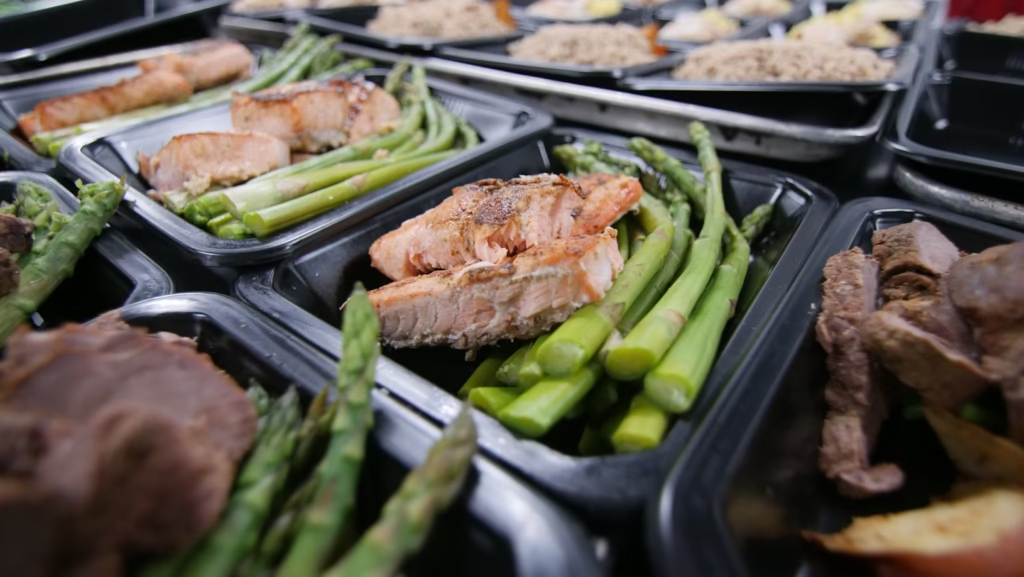Published on August 2, 2025 by Filip
Last updated on August 6, 2025

Meal prep isn’t all about bodybuilders portioning chicken and broccoli into a dozen identical containers. It also doesn’t have to meat eating the same thing for five days in a row, or giving up on your entire weekend to batch cook like it’s your second job.
Instead, meal prep is a simple way to make your week a little easier. You spend less time figuring what you eat, you have fewer dishes to deal with, and fewer expensive takeout orders.
If you’re starting from scratch, this guide on meal prep for beginners will help you skip the fluff and get right to the good stuff.
Why Meal Prep? (It’s Not Just for Gym Bros)
There’s a reason meal prep has stuck around: it works. Especially if you’re cooking for one or two, live in a small apartment, or just hate figuring out what to eat after 6PM. Meal prep lets you:
- Cook once, eat multiple times
- Make healthier choices without needing willpower
- Use up ingredients before they rot in the back of the fridge
- Stop washing the same pan multiple times per day
You don’t need to go full prepper mode for a good meal prep. Even having lunch ready for two days can and will make your week run smoother. You can think of it as pre-deciding – you’re just taking care of future you by ridding yourself of mental decision fatigue beforehand.
What You Need to Start (Keep It Simple)
This is the meal prep gear you genuinely need as a beginner. This isn’t a shopping list for the Container Store or a ploy to buy five new appliances. You likely already have a few basics.
This is what’s worth having around:
- A decent cutting board and sharp knife – Meal prep usually starts with chopping. If you’re hacking away with a dull blade, everything will feel harder. This is where an inexpensive chef knife can help.
- Mixing bowls that don’t slip around – You’ll be using them for many things, such as mixing and marinating. Glass or stainless steel mixing bowls are easier to clean and won’t stain.
- 3-5 food containers with tight lids – There’s no need to go and buy a 40-piece set. It’s best to just get a few that will seal well and fit in your fridge. Glass containers keep your food fresh and keep away BPAs and other harmful toxins from your food.
- A non-stick pan or baking sheet – For cooking vegetables, proteins, and more.
- Optional but helpful: – A rice cooker, a blender (for your sauce or smoothie), or a digital kitchen scale if you care about portion sizes. Also, if you have an air fryer – it can help speed things up and minimize post-meal clean up. If not, I list some small, budget fryers you can check out.
Yes. You can skip the fancy bento boxes, and vacuum sealers that will be mostly clutter when you’re just starting out.
If you do want recommendations for legit gear later, we’ve got a full guide on meal prep tools that are actually worth using and healthy kitchen gadgets if you want to go in the deep end of preparation.
Beginner Recipes That Don’t Suck
You don’t need recipes that feel like a science experiment. Instead, you can start with meals that you already know how to prepare – just scaled up a tad. The key is to choose dishes that:
- Store well – no soggy lettuce
- Reheat well – avoid rubbery chicken or dried-out pasta
- Don’t rely on last-minute garnishes or toppings
Some beginner-friendly ideas:
- Sheet pan vegetables + protein: Roast everything at once, then store it in portions.
- Stir fry + rice: This cooks fast, and it has nearly endless variations.
- Soups or stews: Easily done in one-pot, and easy to batch.
- Grain bowls: Mix rice, quinoa, or couscous with whatever vegetables and sauce you have.
- Pasta salad: This holds up cold, and even tastes better the next day.
Don’t stress over macros or meal labels. The idea is to be comfortable with your lunch whenever it comes down to it.
What to Skip (Seriously, Don’t Buy These Yet)
Every beginner hits the temptation phase – you Google “meal prep” once and suddenly Instagram shows you color-coded lunchboxes and mini sauce containers.
Here’s what to avoid:
- Buying 30 containers before trying 1 meal
Most people tend to overbuy before even starting. It’s best to start small with a few containers that are enough to test if meal prep works for you. - Overcomplicating your week
Prepping 5 totally different meals sounds fun until you’re juggling 14 ingredients on a Sunday night. - Ignoring your actual schedule
Don’t prep lunch if you always eat out on Tuesdays. Prep around your life, not the idea of a “perfect” plan. - Going full “clean eating”
You don’t need to suddenly start spiralizing zucchini or tracking macros. Meal prep doesn’t require a diet.
Building Your First Routine (Weekly Flow That Works)
Here’s a simple way to get started:
- Choose 1 – 2 meals to prep.
Start with lunches, whereas breakfast and dinner can wait. - Choose a block of time.
It doesn’t have to be Sunday. It could be Monday night, or two 30-minute chunks midweek. - Cook your meal, store it and (optionally) label it.
Add a piece of tape or sticky note with the date. Trust me, “what day did I make this?” becomes a weekly game. - Keep track of what worked.
Did the chicken dry out? Did you make too much rice? Adjust next week. - (Optional) Keep backups.
Canned beans, and cooked rice in the freezer can be your food insurance policy.
In Closing
Contrary to how it may seem like at the beginning, you don’t need a 12-step spreadsheet to start meal prepping. You just need a couple of decent tools and one or two meals you won’t mind eating twice.
If you’re still using cracked Tupperware from 2009 or stacking containers like Jenga, it might be worth checking out our guide to durable meal prep gear. Otherwise, just start. Your future self will thank you when they open the fridge and don’t have to think.
